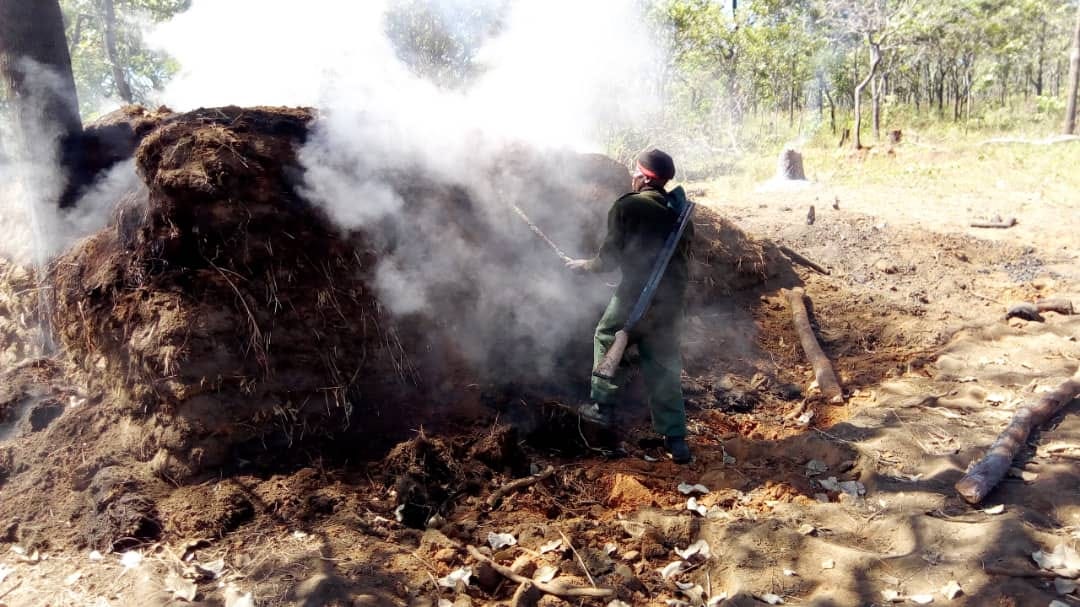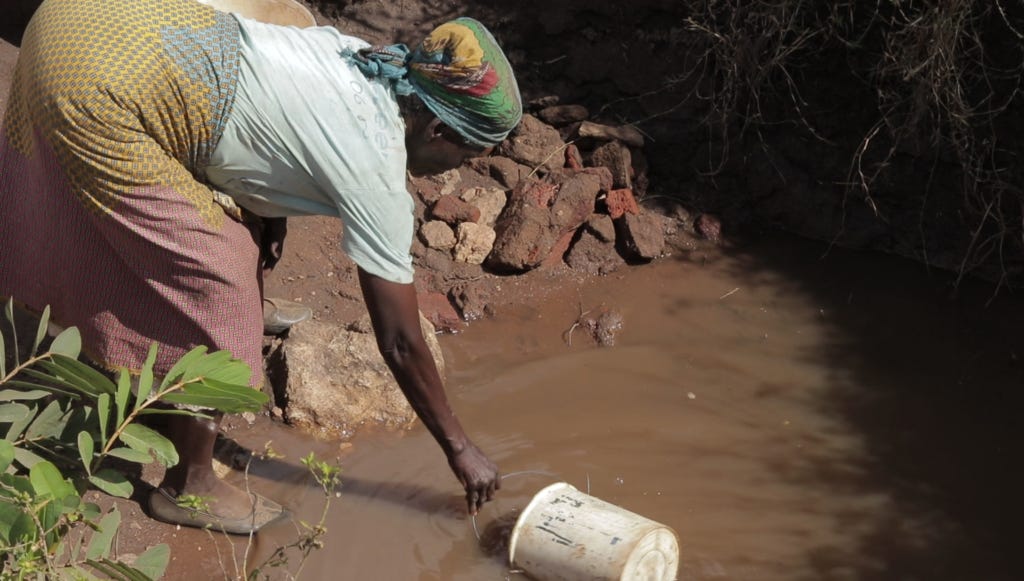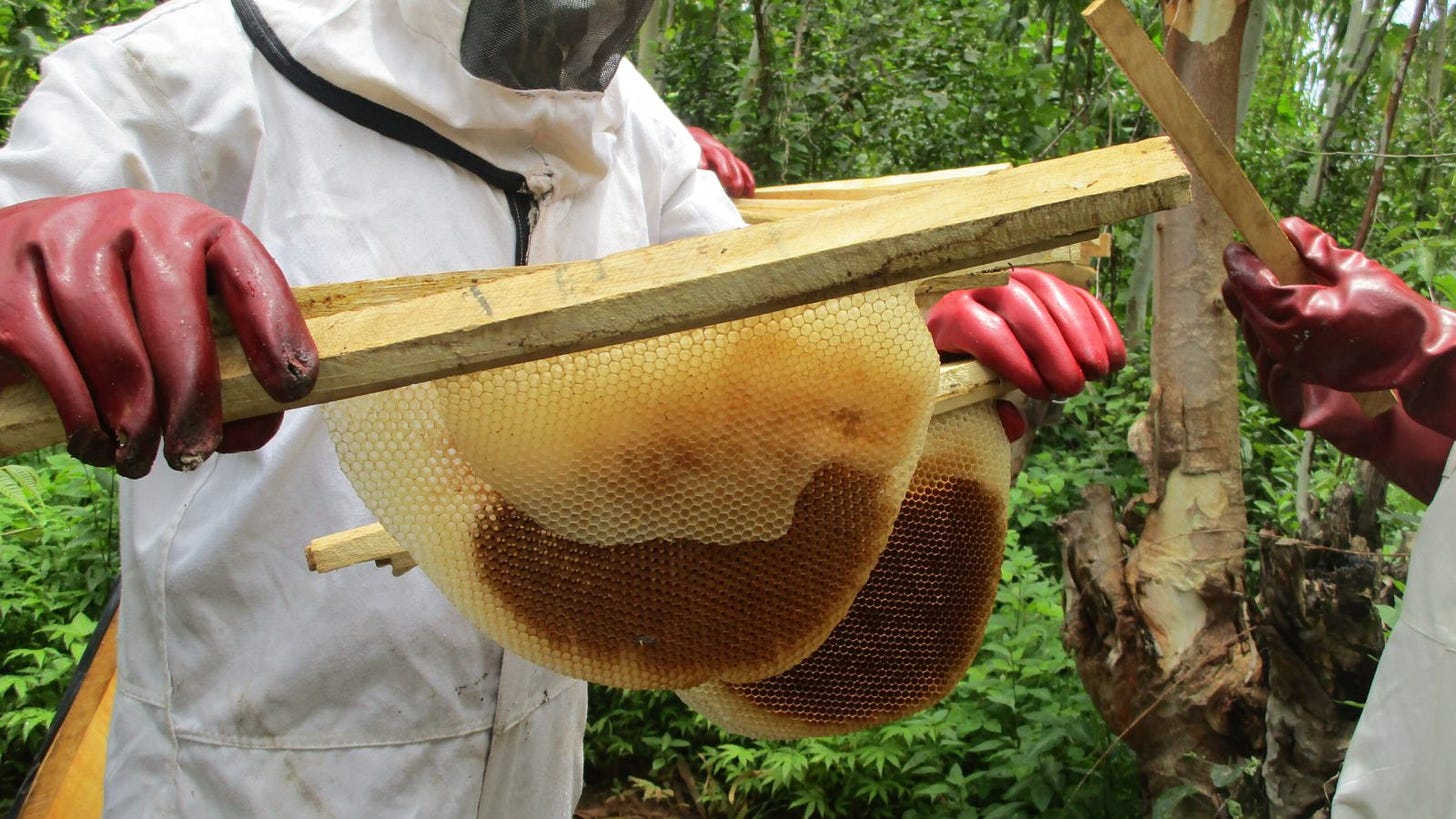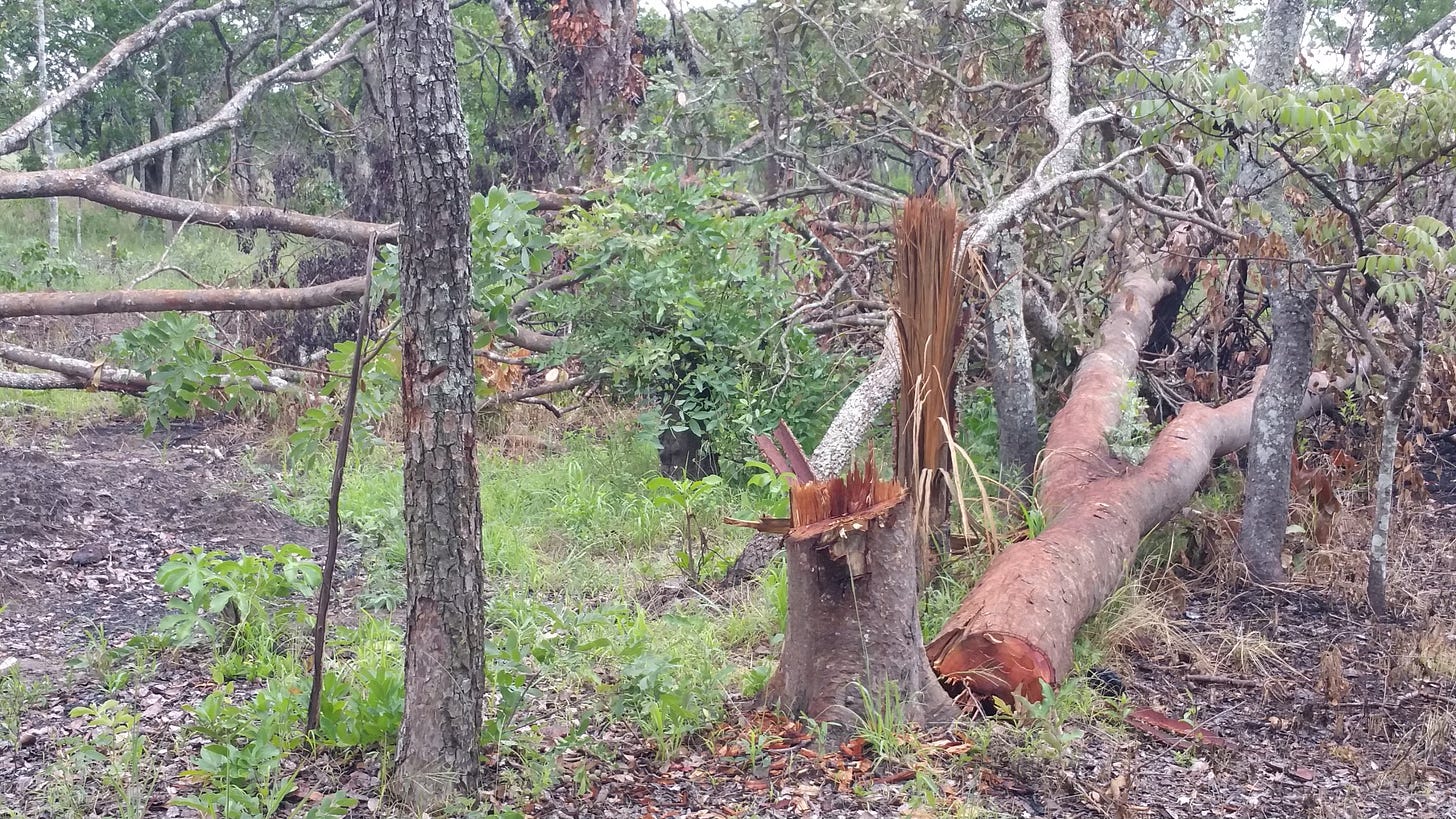Dzalanyama Deforestation Threatens Lilongwe City's Water Supply
Decades of deforestation, illegal logging, and unsustainable farming practices have stripped Dzalanyama's ability to regulate water flow and storage capacity.

LILONGWE, Malawi —Eliza Zidana, a resident of Kauma Township in the suburb of Lilongwe city, points to a murky well, her voice heavy with despair, writes Winston Mwale.
"We can't all draw water during the day at the kiosk," she claims.
"This well is our only option, but we know the water is unsafe."
Kauma, a low-income area of Lilongwe, Malawi's capital, is one of the hardest hit by the city's looming water crisis.
Decades of deforestation in the Dzalanyama Forest Reserve, the city's water source line , have led to dwindling water supplies and compromised water quality.
Women like Eliza bear the brunt of this crisis. They spend hours on end waiting on a queue at kiosks, only to receive trickle drops of water.
They risk their health by collecting water from contaminated sources, leading to outbreaks of waterborne diseases like cholera.
Mitengo, another low-income area, faces similar struggles. Lemison Banda, a community leader, expresses frustration.
"We have a growing population, yet the water supply remains limited to a single kiosk from the 1980s," he says.
The environmental roots of the crisis run deep.
Decades of deforestation, illegal logging, and unsustainable farming practices have stripped Dzalanyama's ability to regulate water flow and storage capacity.
Eroded soils from denuded areas clogs reservoirs and treatment plants, significantly increasing purification costs for Lilongwe Water Board (LWB).
According to Gustaff Chikasema, the Director of Production and Distribution at the Lilongwe Water Board, the city's dependence on only the Dzalanyama catchment area for its water supply puts it at serious risk of facing water shortages.
He says the cost of water purification has gone up due to degraded raw supplies.
Kamuzu Dam 1's depth decreased from over 20 meters to under 20 meters. The city's peak water demand is projected to surge by 2035.
Currently, Lilongwe city has a population of about 1.2 million and the LWB currently serves around 83% of the population that consumes about 125,000 cubic meters per day.
Chikasema also mentions that turbidity in the water has increased significantly over time.
The vast 989 square kilometer forest reserve located southeast of Lilongwe provides over half the capital's water. But decades of destruction have choked its potential.
Dzalanyama Forest Reserve shares boundaries with the Traditional Authorities of Masula, Masumbankhunda, Chiseka, Chingala, and Kalolo in Lilongwe.
Several partners including Pyxus, Lilongwe Water Board, One Acre Fund, Malawi Council for the Handicapped, Catholic Relief Services (CRS), United Nations Development Programme (UNDP), InterAide, Centre for Community Development and Research, and Centre for Quality of Cake have been working in the area around the forest reserve over the past five years.
Farayi Kafanikhale, Assistant Forestry Officer in charge of Area Control Unit 2 around Dzalanyama Forest, provided data on tree planting efforts, stating that in 2023, 535,300 trees were planted, while in 2022, 462,280 trees were planted.
In 2021, 380,800 trees were planted, and in 2020, 375,000 trees were planted.
The figure for 2019 was 393,500 trees planted. Kafanikhale noted that the low figures in certain years were affected by the COVID-19 pandemic.
With a standard of 2,000 trees planted per hectare, the data shows approximately 1,073 hectares of trees were planted in the area from 2019 to 2023.
A study titled Modeling Deforestation in Dzalanyama Forest Reserve, Lilongwe, Malawi: A Multi-Agent Simulation Approach by Kondwani Godwin Munthali and Yuji Murayama found an annual deforestation rate of 3.1%, corresponding to a projected 26,700 ha loss (2010 and 2030) hectares of forest in the reserve.
This suggests that more trees are being destroyed than being planted in Dzalanyama Forest.
Drivers and interventions at hand
LWB has implemented a catchment strategy including raising awareness, promoting sustainable land use practices and mobilizing communities to protect the forest in collaboration with Lilongwe University of Agriculture and Natural Resources.
But underfunding, urban population growth and high charcoal demand complicate matters, says Chikasema.
Teddie Kamoto, Deputy Director of Forestry, says the forst reserve's proximity to Lilongwe city makes it vulnerable to illegal loggers and staff shortages that hinders patrols.
Forestry Act (2019) introduces stiffer penalties, including 10 years' jail for unauthorized tree-cutting and fines up to K5 million.
Data from the Department of Forestry reveals a massive crackdown on environmental offences, with skyrocketing prosecutions, convictions, and significantly harsher penalties imposed between 2021 and 2022.
The number of people charged annually for environmental crimes surged a staggering 781% - from just 79 per year at the baseline to 696 charged in 2022. Convictions followed suit, increasing 743% from a baseline of 70 annually to 590 convictions last year.
The conviction rate also improved from 93.75% to 98.5%, demonstrating our prosecutors are bringing strong cases against these offenders.
Perhaps most notably, the penalties for those convicted became far more severe. The custodial rate, or the percentage of forestry-related prison time, nearly doubled from 9.66% to 17.31%. For those incarcerated, the average custodial sentence spiked 140%, from 10 months at baseline to 24 months in 2022.
But Kamoto argues enforcement and public education are key alongside laws.
Department of Forestry, according to Kamoto, remains understaffed to effectively police the vast Dzalanyama forest which stretches from Lilongwe bordering Dedza to the south and Mozambique to the west and the majority of villagers around it are ultra-poor to afford alternative energy sources.
Kamoto says that due to the vast size of the Dzalanyama forest area, no fewer than 300 security guards are required to patrol it properly.
Kamoto expressed satisfaction that the Malawi Defence Force has agreed to establish a permanent military camp inside the forest itself in order to provide full-time security coverage.
However, he warns Lilongwe's pressing energy needs ultimately drive the crisis, with no easy fixes.
Kamoto also emphasizes the importance of utilizing carbon credits as a means to reward communities for protecting the forest's carbon-storing capacity within the Dzalanyama forest reserve.
By acknowledging the value of carbon credits in incentivizing conservation efforts, Kamoto highlights the potential benefits of this approach in promoting sustainable forest management practices and community involvement in conservation initiatives.
The World Bank's Malawi Economic Monitor February 2024 report (see report below) highlights potential earnings through carbon markets by restoring forests and reducing biomass dependence.
Increasing Malawi's carbon stocks by 148 million tons by 2050 could generate $24.8 million to $74.3 million annually.
The World Bank report underscores sustainable forest management's economic opportunities and leveraging carbon markets for financial returns while promoting conservation and climate resilience.
It also details the financial costs of deforestation in Malawi, which saw forest cover decline from 47% in 1975 to just over 20% in 2021, impacting the economy through land and water degradation.
The reliance on forest biomass fuels like charcoal and firewood, worth an estimated $352 million (K593,137,394,432) or 4.7% of GDP in 2017, underscores forests' financial significance. Sustainable practices are needed to mitigate economic costs and protect natural capital.
One hope is the Dzalanyama Catchment Conservation Trust (DCCT), formed in 2021 to provide villagers alternative incomes through beekeeping and sustainable harvesting while training them as forest custodians and rangers.
A champion for conservation, Leonard Sefu, who previously led the Parks and Wildlife department and now chairs the trust's board, believes beekeeping is the key to diverting people from charcoal.
He refers to the reserve as a villagers' 'genie bank' brimming with resources like trees, water, and the potential for wealth."
Once teeming with a diverse array of game animals, Dzalanyama Forest Reserve has seen its wildlife population plummet, according to a 2006 report from the Government of Malawi.
At present, only monkeys, rabbits, and deer remain in the vast natural reserve.
Beekeeping initiatives supported by Dzalanyama Catchment Conservation Trust and others are proving to be a win-win for both conservation and local economies in areas around Dzalanyama.
Programs promoting beekeeping as an alternative livelihood are showing transformative potential, as evidenced by the story of Alexander Jelemani from Kuuzilira Village, TA Masumbankhunda, in Lilongwe.
Jelemani, once a firewood collector, has transitioned to beekeeping, not only improving his own income but also contributing to forest preservation.
"While I'm happy with this new path, it saddens me to see others still cutting trees," Jelemani shared.
"We all have a responsibility to protect our forests."
Beekeeping clubs (including Katete Club where Jelemani belongs to), averaging 10 members, can generate significant income.
With a honey harvest of roughly 1,000kgs per year and a selling price of K4,000 per kilogram, Jelemani's 8-member club translates to a potential annual income of K500,000 per member.
These beekeeping programs offer a sustainable solution, promoting environmental protection while empowering local communities.
Jelemani's story serves as an inspiration for others seeking a path towards a brighter future, both for themselves and for Malawi's precious forests.
But time is running short before Lilongwe's taps run dry, Chikasema warned, with the city facing 95% drought vulnerability by relying on the threatened watershed.
In a major infrastructure project from 2018, the Lilongwe Water Board (LWB), backed by financial assistance from the European Investment Bank (EIB) under the Lilongwe Water Resource Efficiency Programme, undertook the raising of Kamuzu Dam I.
The project, initially awarded at a contract value of US$16,241,428.17, saw a revision to US$22,708,664.16 (K38,193,507,926.67) due to modifications in the design, particularly involving the spillway and bottom outlet works.
Sharing the financial burden, the Lilongwe Water Board and the Government of Malawi jointly contributed MK1,900,000,000.00 towards the resettlement costs for individuals affected by the project, as well as the relocation of impacted structures in the area.
This initiative resulted in a significant increase in the combined storage capacity of Kamuzu Dam I and Kamuzu Dam II, jumping from 23.4 million cubic meters to 43.4 million cubic meters, however that would turn into failed ambition if the catchments of Dzalanyama forest continue being degraded.
On his part, Sefu remains optimistic targeted projects linking villagers' livelihoods to conservation can rebuild nurturing connections to Malawi's vital ecosystems.
Saving Dzalanyama is crucial not just for Lilongwe's present but its future livelihoods and industrial developments.
With climate change increasing drought and flood risks, the capital's very survival could hinge on halting environmental damage threatening its water source.
Urgent efforts combining government action, NGOs, local communities and international support are needed to ensure Dzalanyama's sustainable management to guarantee clean, affordable and sustainable water supply for Lilongwe city.
The future well-being of Lilongwes population and business activities surely rest on the delicate balance between environmental protection and juggling with the growing demands.
This investigation was made possible with support from UK and USAID joint MCHF project implementing Forest Accountability Journalism in Malawi in partnership with Association of Environmental Journalist and Lilongwe Wildlife Trust.









All what we need Is forest protection